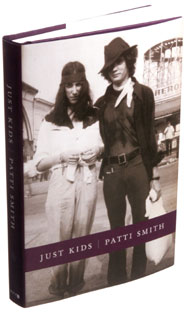Stories To Tell Books BLOG
Filtering by Category: Memoir and Family History Writing Today
Be a Storyteller: Dramatize Your Memoir or Family History Book
Biff Barnes
Sidebars Add Color to Memoirs and Family History Books
Biff Barnes
Guide for Memoirists: David Brooks' Life Lessons
Biff Barnes
Family History Books: Using Literary Techniques to Tell Stories
Biff Barnes
World Building in Memoir and Family History Books
Biff Barnes
Family History and the Race for Mayor of San Francisco
Biff Barnes
Family History Books: Using Literary Techniques to Tell Stories
Biff Barnes
See You at The Colorado Family History Expo
Biff Barnes
A Father's Day Challenge: Preserve Your Family History
Biff Barnes
A False Memoir? Why Be Shocked?
Biff Barnes
Family History With Feelings
Biff Barnes
Rock Memoirs - The Good and the Bad
Biff Barnes
I recently ran across a blog post on TheWrap which boasts it “Covers Hollywood” titled “Sex, Drugs & Publishing: Music Memoirs on a Rockin’ Roll.” Leading with the news that Keith Richards of the Rolling Stones has collected a $7.3 million advance for his just released memoir Life, the post notes that Rock memoirs have become a reliable cash cow for the publishers.
“They’re pretty easy to produce, and with an already built-in audience, fairly cost-effective,” a NYC-based publishing executive told TheWrap. “Pretty much all you have to do is interview the subject and just get a ghost(writer) to polish it into prose.”
Richards leads the Amazon preorder list.
That might lead to a bit of justified cynicism.
But on the same day I saw the post I heard Terri Gross on NPR interview singer Patti Smith, a punk icon, about her memoir Just Kids which has been nominated for a National Book Award in non-fiction. What a contrast.

Smith’s book recalls the late 60s and 70s in New York City and her relationship with Robert Mapplethorpe. Together they grow up in the avant-garde world of Andy Warhol and Allen Ginsburg.
Smith described their life together in this way, “We gathered our colored pencils and sheets of paper and drew like wild, feral children into the night, until, exhausted, we fell into bed.”
N.Y Times reviewer Tom Carson called Just Kids “…the most spellbinding and diverting portrait of funky-but-chic New York in the late ’60s and early ’70s that any alumnus has committed to print.”
The book deals with events before either Smith or Mapplethorpe had achieve the fame that would come later.
As Carson put it, “Just Kids captures a moment when Ms. Smith and Mapplethorpe were young, inseparable, perfectly bohemian and completely unknown, to the point in which a touristy couple in Washington Square Park spied them in the early autumn of 1967 and argued about whether they were worth a snapshot. The woman thought they looked like artists. The man disagreed, saying dismissively, “They’re just kids.”
It’s nice to see that the rock’n roll genre can produce art as well as schlock.
Click here to read the complete NY Times review of Just Kids
Click here to read TheWrap’s “Sex, Drugs & Publishing: Music Memoirs on a Rockin’ Roll”